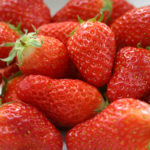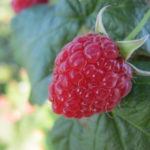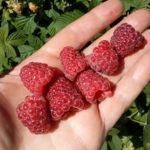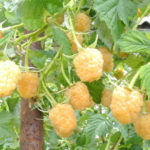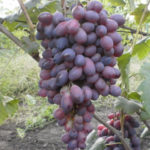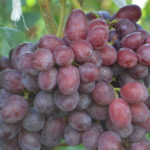Grape variety Marquette
The selection of new varieties of grapes does not stand still, and scientists both in our country and abroad are making significant efforts to breed hybrids with high quality fruits and unpretentious cultivation at the same time. One of the great examples of this kind can be called the relatively new technical variety Marquette, obtained at the University of the American State of Minnesota by crossing two interspecific hybrids with the working names MN 1094 and Ravat 262. As a result, a complex "cocktail" of genes of the classic European the Vitis vinifera grape and a number of American species, including Vitis riparia. On the paternal side, our hero is in the second generation a descendant of an old French variety Pinot noir, thanks to which, obviously, he received his excellent technological properties as a raw material for winemaking. American ancestors, in turn, provided our hero with excellent resistance to fungal diseases and frost.
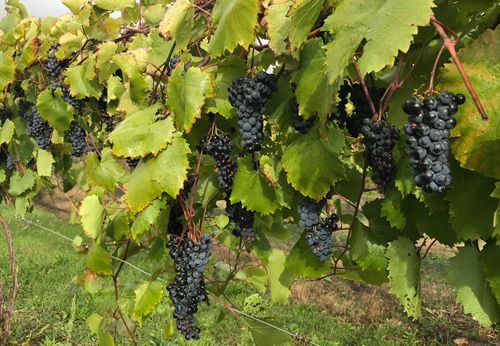
Hybrid seeds were obtained by breeders Peter Hemstad and Jim Luby in 1989, and in 1994, from numerous seedlings, the one that then gave birth to a new hybrid was chosen. Initially, it was given the name MN 1211, and it received its current name in 2005, when it successfully passed all the tests and was officially patented. The name was chosen in honor of the famous French explorer of North America and Christian preacher Jacques Marquette.
The following years were a time of triumph for the new variety, both among American and foreign producers. To date, dozens of various types of wines are made from this grape, some of which have already won well-deserved awards at national and international competitions and exhibitions. The first cuttings were brought to our country in the mid-2000s, and today the American guest has become very popular among domestic amateur winemakers. Significant interest in it is due to the tremendous frost resistance of the variety, which is especially appreciated by winegrowers from regions with harsh climatic conditions.
Agrobiological characteristics
Growth vigor of Marquette bushes is above average. The crown of a young shoot is closed, slightly pubescent, yellowish-green in color and with a reddish border around the perimeter of young leaves. The fully developed leaf is not too large, rounded, three- or five-lobed with a very weak degree of dissection between the lobes. The profile of the grape leaf blade is funnel-shaped, its surface is smooth, dark green with light veins. The upper side notches are small, barely outlined, most often in the form of a recessed corner. The bottom notches are usually absent. The petiole notch is open, vaulted with a sharp bottom, sometimes lancet. The petioles are rather long, green at the base, while a bright anthocyanin coloration may appear closer to the leaf. The denticles along the edges of the leaf blade are of different sizes, in shape they resemble a regular triangle with smooth edges and pointed tops. The flowers are bisexual, and therefore pollination usually occurs without problems, however, a ripe bunch may contain a few small green berries, and the brush itself, under adverse weather conditions during the flowering period, may be overly loose. Annual shoots ripen very well, for a significant part of their length. The vine then takes on a light brown hue.
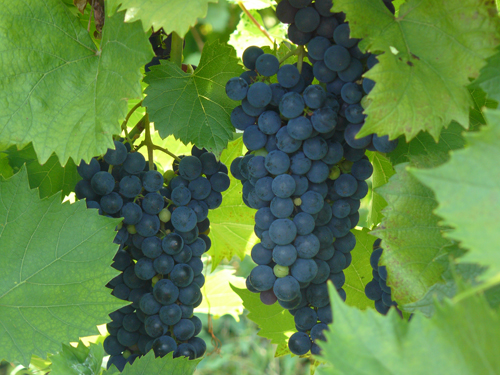
The size of the bunches is standard for technical grape varieties. In length, they reach 10-11 cm, their average weight ranges from 90-110 grams. The shape of the hands is slightly conical, sometimes with one shoulder. The structure is loose or moderately dense. The combs are rather long, herbaceous, green in color, in some cases with a reddish tint. The berries are small, rounded, dark blue or black, covered with a bluish protective bloom of prune.The diameter of the grape is 12-14 mm, the usual weight is 1.1-1.2 grams. Within the brush, the berries are not in too much contact with each other, so they do not wrinkle or deform. The pulp is colored in a light pink color, it tastes quite harmonious, but bright varietal shades in the aroma of fresh berries are not traced. The content of sugars in the wort is very high - 25-27 g / 100 ml, but the titratable acidity cannot be called low - 11-12 g / l. The skin of the berries is thin, but strong enough. The seeds are present, however, they make up an insignificant part of the total mass of the crop. The juice yield of the variety reaches 70-75% of the weight of the harvested grapes.
The main purpose of Marquette is to make high-quality wines of various types from it, not inferior in taste to drinks produced on the basis of purebred European varieties. Dessert and fortified wines are best made from it, while dry table wines in their pure form are often too heavy due to the high alcohol content. To avoid this, the wine material is used in a blend with other, less strong varieties. In addition, the acidity of the drink also needs to be normalized, which is reduced by malolactic fermentation. The color of the ripe wine is deep, dark ruby, the density and level of tannins are medium, the bouquet is very multifaceted. In the pleasant aroma of the drink, you can feel the tones of blackberries, peppers, cherries, currants, plums, tobacco, leather and various spices. Aging in oak barrels gives our hero even more complexity, making him full-bodied and more structured. The holding period is usually nine to sixteen months.
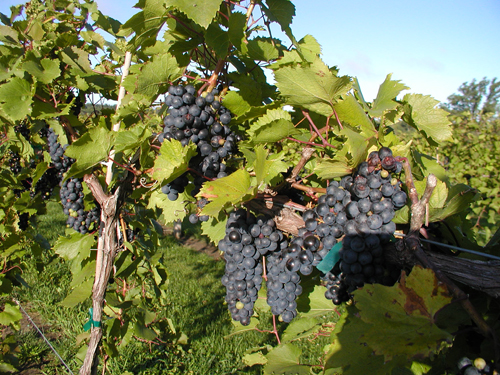
The variety belongs to medium early varieties with the duration of the growing season from bud break to the onset of removable maturity - 125-130 days. In the south of our country, you can start cleaning in the second half of August, when the sum of active temperatures reaches 2600-2700 ° C. At the same time, some American winegrowers claim that they manage to make excellent wine from grapes harvested at a CAT level of 2300-2400 ° C. In their opinion, at this time, the sugar content of the juice reaches optimal values, and the increased acidity is manageable for experienced winemakers. Thanks to these features, Marquette can be successfully cultivated not only in traditional wine-growing regions, but also somewhat to the north. Moreover, almost everywhere where grapes have time to ripen, the bushes can be cultivated in an open culture, due to the phenomenal frost resistance of the variety, reaching -38 ° C. At the same time, it does not do without negative flaws. So, our hero has a predisposition to early budding in the spring, which is why recurrent late-spring frosts can cause him serious damage, which is only partially compensated for due to some productivity of the replacing buds.
Marquette's yield is rated as average. About 80-100 centners of the crop are harvested from a hectare of plantations. On each fruitful shoot, up to two clusters are usually laid, however, due to their small size, the gross harvest from the bush is not too large. Plants are not prone to overloads, and therefore they do not require complex procedures for rationing the yield.
After the onset of technical maturity, the grapes can be left to continue hanging on the bushes. During this time, it accumulates additional sugar, but the acidity decreases slightly. The late harvest is used in the production of special types of wines, such as dessert wines. The berries are not prone to cracking, and therefore even unfavorable weather conditions in the form of rains or a sharp change in soil moisture for other reasons do not lead to damage to the crop.Fungal diseases slightly damage both vegetative and generative organs of plants, and therefore our hero does not require multiple treatments with fungicides. The variety is moderately resistant to the leaf form of phylloxera.
The bushes are cultivated on a high trunk with a vertical garter of a young growth, or with its free arrangement in space. On the grape bushes that have entered fruiting, it is recommended to carry out an early clarification of the fruit zone, in order to improve the technological conditions of the future Marquette harvest.
